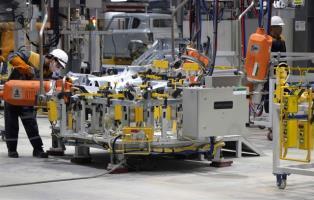HCM City merger opens new opportunities for wood, construction, and building materials sectors
The formation of a new HCM City through the merger with Bình Dương and Bà Rịa – Vũng Tàu is creating significant opportunities for enterprises in the wood processing, construction, and building materials sectors.
HCM CITY — The formation of a new HCM City through the merger with Bình Dương and Bà Rịa – Vũng Tàu is creating significant opportunities for enterprises in the wood processing, construction, and building materials sectors, business leaders said at a seminar held in the city on Wednesday.
Speaking at the event titled “Administrative Reform – Creating Space for Development,” Phùng Quốc Mẫn, chairman of the Handicraft and Wood Industry Association of HCM City (HAWA), expressed strong confidence in the potential of this merger.
“The merger of Bình Dương, Việt Nam’s wood processing hub with nearly US$5 billion in export revenue in 2024, with HCM City, a centre for trade promotion, technology, marketing and other services, along with Bà Rịa – Vũng Tàu, home to a key seaport system, will create a highly favourable, unified economic space. The wood and furniture industries are well-positioned to leverage the many advantages this integration brings.”
Đinh Hồng Kỳ, chairman of the Saigon Construction and Building Material Association (SACA), noted that the newly expanded HCM City, with a population of 14 million and a total area of 6,700sq.m, will not only become Việt Nam’s largest urban area, but also a metropolitan centre of regional and even continental significance.
A mega-city of this scale will naturally generate immense demand for housing, infrastructure, and public services, creating vast opportunities for the construction and building materials industries, he said.
Kỳ also highlighted major infrastructure projects currently underway, including the near-completion of Long Thành International Airport, the Biên Hòa – Vũng Tàu Expressway, Ring Road 3 (expected to connect through Thủ Đức by the end of the year), and the groundbreaking of Ring Road 4 scheduled for August 19.
Other strategic initiatives, such as the development of a free trade zone in Cái Mép, are also moving forward.
These massive infrastructure investments will generate sustained demand for construction materials and related services,” Kỳ added. He also emphasised the future operation of metro lines and the development of transit-oriented development (TOD) zones along with the planned coastal mega-city in Bà Rịa – Vũng Tàu, which will fuel real estate growth.
Speakers at the seminar emphasised that while each locality brings unique strengths — HCM City in finance, banking, and technology, Bình Dương in processing and manufacturing; and Bà Rịa – Vũng Tàu in tourism, seaports, and logistics — the key to success lies in their strategic, synergistic integration.
The merger should not be a mechanical consolidation. It must be an intelligently coordinated process, with synchronised infrastructure and shared development goals, they said.
Dr. Ngô Viết Nam Sơn, president of Ngo Viet Architects & Planners, asserted that the expanded HCM City will emerge as a coastal economic megacity, unlocking substantial potential for trade, the building materials industry, and interior design.
To fully capitalise on these opportunities, Sơn proposed recommendations, including multimodal infrastructure integration, urban planning reforms, elevated standards for auxiliary infrastructure, and investment in specialised urban areas through greater public-private partnerships.
Mẫn noted that Việt Nam is entering a new stage of development, shaped by provincial mergers and comprehensive administrative reforms.
“This transformation opens major opportunities to restructure and better utilise resources, accelerate socio-economic progress, and build a leaner, more modern public administration,” he said.
“It also lays the groundwork for a long-term vision, making comprehensive planning in urban development, architecture, construction, interior design, and real estate more essential than ever, as these sectors will define the future of our living and working spaces.”
To fully seize these opportunities, businesses and policymakers must adopt a broad, strategic perspective and develop innovative approaches aligned with sustainable development trends, he added.
Jointly organised by HAWA and SACA, the seminar served as a prelude to the Việt Nam Interior and Build Exhibition (VIBE) 2025, which will take place from October 1–4 at the Saigon Exhibition and Convention Centre in HCM City. — VNS





